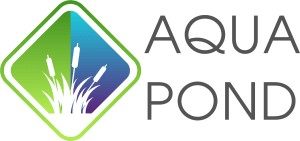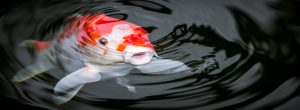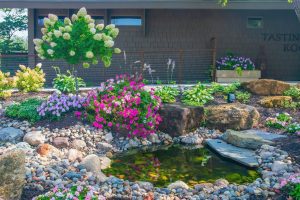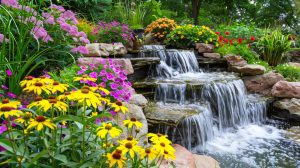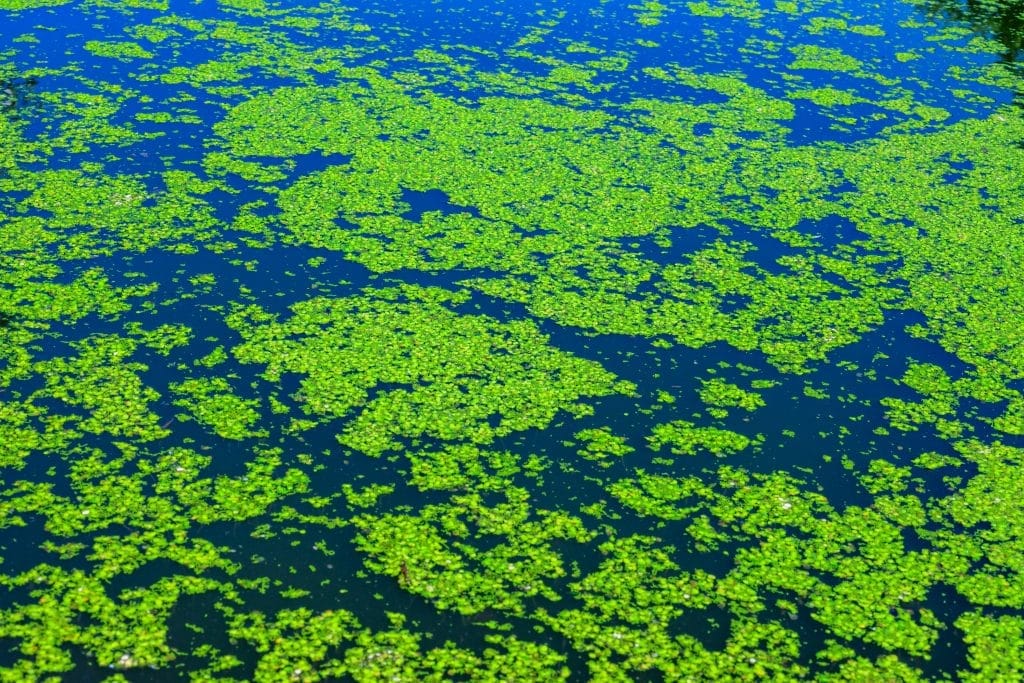
How Do You Get Rid of Duck Weed: Effective Strategies for a Clean Pond
Duckweed can quickly take over a pond, creating issues for fish and other aquatic plants.
The best way to get rid of duckweed is through a combination of physical removal and improving pond conditions.
Understanding the factors that contribute to its growth is key to successful control.

Many pond owners find that regular maintenance is essential to keep duckweed in check.
While it is a natural part of the pond ecosystem, excessive duckweed can outcompete other plants and disrupt the habitat for fish and wildlife.
By assessing pond conditions and implementing effective control methods, individuals can manage duckweed more effectively.
A mix of mechanical and biological control methods can lead to lasting results.
Learning how to prevent duckweed from returning will help maintain a balanced and healthy pond ecosystem.
Key Takeaways
- Regular maintenance helps keep duckweed under control.
- Understanding pond conditions is crucial for effective management.
- Combining control methods reduces the likelihood of duckweed re-growing.
Understanding Duckweed
Duckweed is a small aquatic plant that floats on the surface of water bodies. It can present several challenges, particularly regarding water quality and lake management.
Recognising the types of duckweed and understanding why it can be problematic is essential for effective control.
Identifying Types of Duckweed
There are various species of duckweed, each with distinct characteristics.
- Lemna minor: This is the most widespread species, with small, flat leaves that are oval-shaped.
- Great duckweed: Recognisable by its larger size, it has broader leaves compared to Lemna minor.
- Least duckweed: This species is the smallest and floats freely, often forming dense carpets on the water surface.
- Fat duckweed: Known for its thicker leaves, it tends to grow in nutrient-rich waters.
- Ivy-leaved duckweed: This species has elongated leaves and resembles ivy in structure.
- Rootless duckweed: As the name suggests, it lacks roots and floats freely.
- Red duckweed: This unique type develops a reddish hue and can indicate high nutrient levels in the water.
Correct identification allows for proper management strategies tailored to each species.
Why Duckweed Can Be Problematic
Duckweed can cause significant issues in ponds and lakes, particularly in summer. Its rapid growth can lead to dense mats that block sunlight from reaching underwater plants. This lack of light can disrupt aquatic ecosystems, harming fish and other aquatic life.
Additionally, duckweed thrives in nutrient-rich waters, often resulting from runoff or waste. This excessive nutrient presence can lead to poor water quality and increased algae blooms, which consume oxygen and can harm aquatic organisms.
Also, dense duckweed mats can hinder recreational activities like fishing and swimming.
For these reasons, understanding duckweed and its impacts is crucial for maintaining healthy aquatic environments.
The Pond Ecosystem and Duckweed

Duckweed plays a complex role within the pond ecosystem, impacting both water quality and the life it supports. Understanding these interactions is vital for maintaining a balanced environment.
Role of Duckweed in the Ecosystem
Duckweed serves as an important component in many pond ecosystems. These small floating plants provide shade, which can help regulate water temperature.
This shade is beneficial for species like goldfish and koi, which thrive in stable conditions.
In addition to providing cover for fish, duckweed contributes to nutrient cycling. It absorbs excess nutrients from the water, which can reduce problems such as algal blooms.
This plant can also serve as food for native species and domesticated waterfowl, providing essential nutrients for their diet.
Furthermore, duckweed can support aquatic insects and microorganisms, which play crucial roles in the food web. By doing so, it helps maintain a diverse ecosystem, rich in various life forms.
Effects of Duckweed on Water Quality and Aquatic Life
While duckweed can be beneficial, excessive growth can severely affect water quality and aquatic life.
When overgrown, it limits sunlight penetration, reducing photosynthesis in submerged plants. This decline in plant life can decrease oxygen levels in the water.
Lower oxygen levels can negatively impact fish, including species such as koi and goldfish, leading to stress or even death. Additionally, reduced light can harm native aquatic plants, which are vital for maintaining healthy ecosystems.
Excessive duckweed can also block water flow, causing stagnation. Stagnant waters are less oxygenated and can become breeding grounds for harmful bacteria.
This decrease in water quality can further disrupt the balance of the ecosystem, harming fish and other aquatic species.
Assessing Pond Conditions

Understanding the conditions of a pond is essential for managing duckweed. Key factors include water quality, nutrient levels, and environmental influences such as sunlight and water movement.
Nutrient Levels in Water
Nutrient levels significantly impact the growth of duckweed.
High concentrations of ammonia, nitrates, and nitrites encourage rapid growth. Regular testing of water quality can help identify excess nutrients.
To manage these levels, it is important to keep nutrient inputs low.
This can be done by minimising runoff from fertilisers or organic matter.
Slow-moving water bodies tend to accumulate nutrients more readily.
Implementing strategies to increase water flow, such as adding a waterfall, can assist in dispersing nutrients and reducing duckweed.
Physical Removal of Duckweed

To effectively manage duckweed, physical removal methods can be highly efficient. These approaches include manual skimming and vacuuming, as well as using netting and pond skimmers to keep the water clear and healthy.
Manual Skimming and Vacuuming
Manual skimming involves using a net or rake to physically remove duckweed from the pond’s surface.
This method is straightforward and requires minimal tools. A long-handled net is ideal for reaching across wider areas.
Regular skimming can significantly reduce the duckweed population, especially during warm months when it grows rapidly.
Pond vacuums are another effective tool for removing duckweed.
These devices can suck up both duckweed and debris from the pond’s bottom. They are particularly useful for maintaining larger ponds where manual skimming might be less practical.
Proper use of a vacuum helps to keep the pond water clear and reduces the chances of duckweed returning.
Netting and Pond Skimmers
Using netting can help prevent leaves and other organic matter from accumulating in the pond, which can promote duckweed growth.
By placing nets over the water in autumn, he can catch falling leaves before they sink. This reduces the nutrient input, making the environment less favourable for duckweed.
Pond skimmers are another effective tool.
These devices float on the water’s surface and can continuously remove debris, including duckweed.
They work by drawing water through a net that captures unwanted plant material while allowing clean water to remain. Maintaining a skimmer regularly ensures that small amounts of duckweed do not accumulate and proliferate.
Biological Duckweed Control

Biological control methods can effectively manage duckweed populations in ponds. By using natural predators and supportive aquatic plants, pond owners can create a balanced ecosystem that reduces duckweed growth.
Utilising Fish and Wildlife
Introducing fish that feed on duckweed can significantly help control its spread.
Species like grass carp and tilapia are known as effective duckweed predators. They consume large amounts of duckweed, which helps keep its population in check.
Another approach is to encourage the presence of waterfowl, such as ducks.
These birds graze on duckweed, contributing to its reduction. Ensuring that these animals have access to the pond can be beneficial for maintaining balance.
Care should be taken not to introduce too many predators, as they can disrupt the pond’s ecosystem.
Aquatic Plants as Competitors
In addition to fish and wildlife, planting certain aquatic perennials can outcompete duckweed for resources.
Species like water lilies or submerged grasses can thrive in the same environment as duckweed. These plants absorb nutrients and shade the water, making it difficult for duckweed to survive.
Using a mix of these competitive plants can create a healthier habitat.
This approach will not only help reduce duckweed but also promote biodiversity.
By fostering a variety of plant life, the pond ecosystem becomes more resilient, leading to improved aquatic weed control.
Chemical Treatments and Considerations
When managing duckweed, chemical treatments can be considered as a viable option. These methods involve using specific herbicides designed to target and kill duckweed. However, it is essential to balance effectiveness with the safety of the environment and other aquatic life.
Herbicides and Duckweed Killers
Certain herbicides are specially formulated to eliminate duckweed. Common products include glyphosate and diquat. These chemicals can be effective in killing the invasive species when applied correctly.
Targeted Application: It is crucial to apply herbicides only to areas heavily infested with duckweed to minimise impact on other aquatic plants.
Follow Instructions: Always adhere to the manufacturer’s guidelines regarding dosage and application method.
Timing: Applying herbicides during the warm months when duckweed is actively growing can increase effectiveness.
In some situations, using a combination of treatments may yield better results for water purification and maintaining pond health.
Balancing Efficacy and Environmental Safety
While herbicides can be effective, they may also pose risks to non-target species in the water. Therefore, it is important to consider the following:
Environmental Impact: Assess the potential harm to fish, frogs, and beneficial plants before applying treatments.
Non-Chemical Alternatives: Explore options such as bubble aeration or introducing natural grazers like goldfish, which can control duckweed growth without chemicals.
Testing and Monitoring: Regularly test water quality to ensure that herbicides do not lead to adverse effects on the pond’s ecosystem.
Mechanical Control Tactics
Mechanical control of duckweed involves using physical methods to manage its growth. This section will cover effective tactics, focusing on how devices like fountains and aeration systems can help.
Fountains and Aeration Devices
Fountains are useful in controlling duckweed by increasing water circulation. The movement helps prevent the plant from settling on the surface, disrupting its growth.
Options include decorative fountains and larger aeration systems, which can provide both aesthetic and functional benefits.
Bubble aeration is another effective option. This method releases air bubbles to enhance water oxygen levels.
Increased oxygen promotes healthy aquatic life that can naturally reduce duckweed populations. Additionally, it aids in breaking down bottom sediments, which are often rich in nutrients that support duckweed growth.
Regular maintenance of these devices ensures they operate effectively, helping to keep duckweed at bay.
Using such mechanical tactics can be a practical way to manage water quality and control unwanted plant growth.
Preventing Duckweed Growth
Effective management of pond conditions is essential for preventing duckweed growth. Focus on cultural practices and water management to maintain a healthy environment that discourages duckweed.
Cultural Practices and Water Management
Maintaining proper pond health is key to preventing duckweed.
One method is to control nutrients in the water. Excess nutrients, particularly nitrogen and phosphorus, encourage duckweed growth. Regularly testing the water can help monitor nutrient levels.
Implementing cultural practices is also important. This includes reducing organic waste by removing decaying leaves and plant matter from the pond.
Keeping the pond clean limits the food sources for duckweed.
In addition, improving water movement through aeration can disrupt duckweed’s floating habitat.
Using a water pump or fountain increases circulation. This helps prevent stagnant areas where duckweed thrives, promoting a balanced aquatic ecosystem.
Dealing with the Aftermath
After removing duckweed, it is crucial to assess the pond’s health and water quality. Monitoring these factors will help ensure that the pond remains a healthy ecosystem for both plants and wildlife.
Pond Recovery and Health Assessment
Once duckweed is removed, the pond should be closely monitored for recovery.
Start by checking the water quality. Use a reliable test kit to measure pH, ammonia, nitrite, and nitrate levels. Healthy levels are typically a pH between 6.5 and 8.0, with ammonia and nitrite at zero.
Next, observe the aquatic plants. Some may have been affected by the duckweed, so replacing any dead or damaged plants will help restore balance.
Additionally, maintaining a proper balance of nutrients is essential, as excess nutrients can cause future duckweed growth. Regular testing and monitoring will keep the pond healthy and prevent another infestation.
Legal and Ethical Considerations
Managing duckweed requires careful attention to legal and ethical factors. Individuals should understand local regulations regarding the control of invasive species and ensure that their actions do not harm native wildlife.
Compliance with Local Regulations
Before attempting to control a duckweed infestation, it is crucial to check local laws.
Many areas have regulations regarding the use of certain chemicals or biological controls, such as grass carp, which consume duckweed.
Using unauthorised methods can lead to fines or legal issues.
Additionally, some native species may also be affected by the control methods. Therefore, it is wise to research and follow guidelines set by local wildlife agencies or environmental groups.
Ethical Treatment of Wildlife
When dealing with invasive species like duckweed, ethical treatment of wildlife is essential.
Removing duckweed might be necessary, but it should not disrupt the habitat of native species.
Care must be taken to avoid harming fish, amphibians, and other wildlife that rely on ponds for survival.
Using natural methods, like improving aeration or manually removing duckweed, can minimise harm to the ecosystem.
Individuals should also avoid introducing non-native species for control without proper permits.
